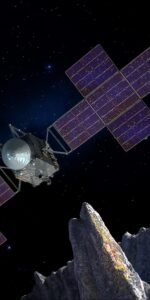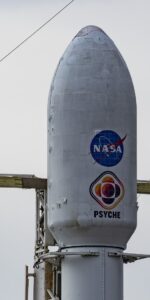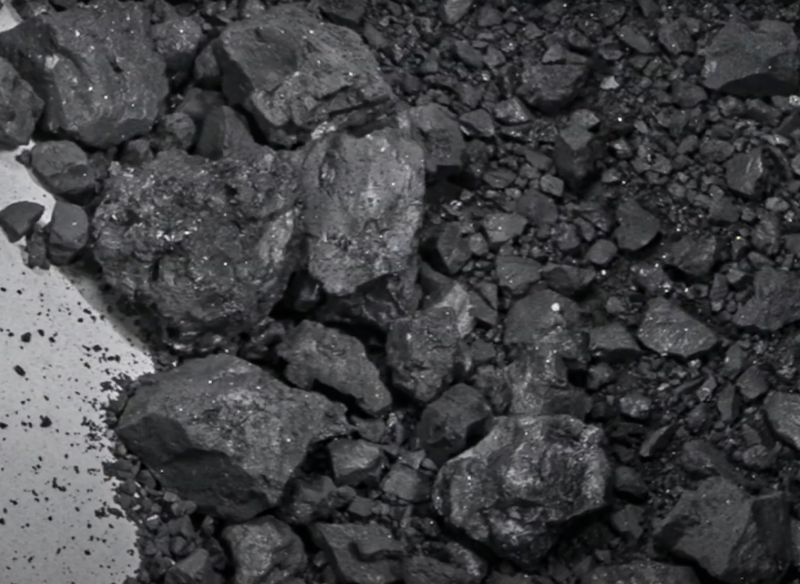
After a journey of 3.86 billion miles, NASA’s OSIRIS-REx asteroid samples were delivered safely to Earth on September 24th. The spacecraft, whose name is short for Origins, Spectral Interpretation, Resource Identification, and Security – Regolith Explorer, was the first U.S. mission to collect and return samples from an asteroid. However, the OSIRIS-REx science team’s work is just beginning. Over the coming years, asteroid samples will be distributed to 38 laboratories around the world. The science team will seek to address a profound question about our place in the universe: How did life first emerge? The OSIRIS-REx mission will help refine models for the origin of life by cataloguing the inventory of organic compounds inside asteroids.
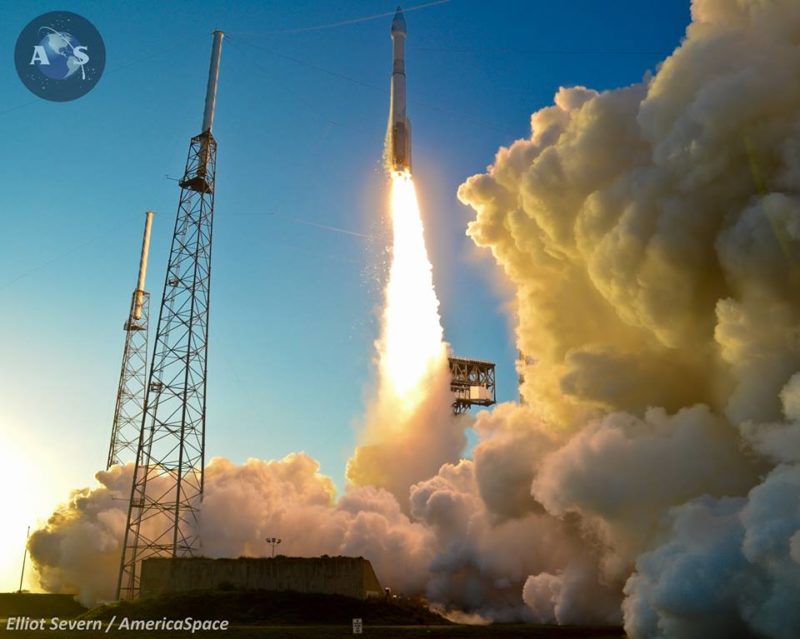
Like all planetary missions, OSIRIS-REx was enabled by a prolonged effort by a team of scientists and engineers. After years of advocacy by Principal Investigator Dante Lauretta at the University of Arizona, it was selected for development in 2011. OSIRIS-REx was the third mission of NASA’s New Frontiers Program, a class of medium-sized missions intended to address strategic goals in planetary science. The spacecraft enjoyed a relatively trouble-free development, and it was delivered on budget and on schedule. It launched in 2016 on an Atlas V rocket, dazzling observers on Florida’s Space Coast in the process.
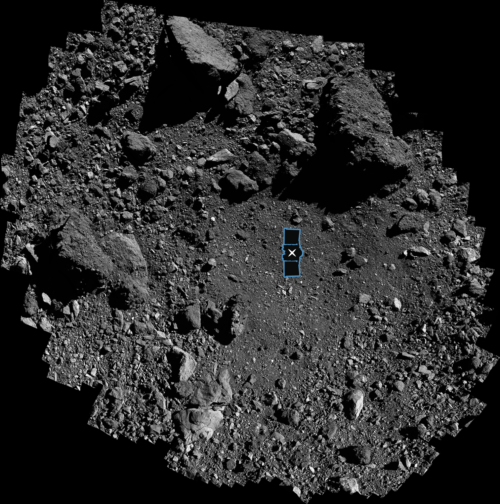
OSIRIS-REx arrived at its target, the carbon-rich asteroid Bennu, in 2018. Although its primary goal was to collect samples, it made several surprising discoveries while it was orbiting the asteroid. OSIRIS-REx captured the ejection of plumes of rock and dust from the asteroid, which are driven by the Sun heating its unstable surface. Its thermal infrared spectrometer detected clay minerals on Bennu’s surface, which were created by interactions between rock and liquid water early in the asteroid’s history. The most unexpected discovery of the mission was Bennu’s rough surface. Contrary to the science team’s expectations, the asteroid is a “rubble pile” of boulders and cobbles held together by weak gravitational interactions.
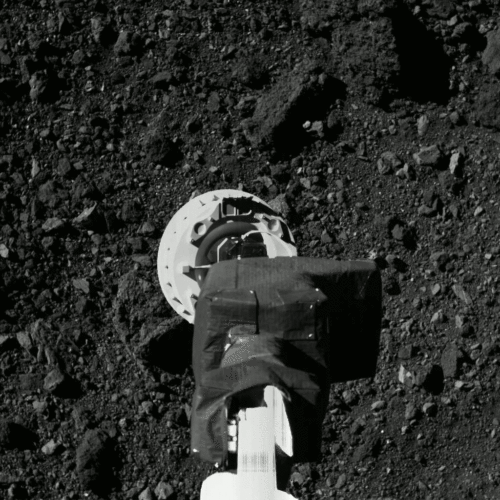
These abundant hazards presented a serious threat to the spacecraft, as it was designed to land on a broad (164-foot-wide), flat surface dominated by fine powder. No sites meeting these criteria could be found. The OSIRIS-REx engineering team adapted by writing a new optical navigation program, which allowed the spacecraft to navigate accurately and autonomously using its suite of cameras. Meanwhile, they identified a 52-foot-wide landing site dubbed “Nightingale,” which is nestled inside a crater near Bennu’s north pole.
On October 20th, 2020, OSIRIS-REx cautiously descended towards Bennu’s surface. As its touch-and-go (TAG) sampling arm contacted the asteroid’s surface, the spacecraft fired a burst of nitrogen gas. The sampling procedure unleashed a storm of rocks and regolith which flew in every direction. At least 8.8 ounces (250 grams) were caught in the spacecraft’s sampling head, exceeding the mission’s requirements by a factor of four. In fact, too much material was trapped inside the sampling device and its cover, which was designed to contain the sample, was wedged open.
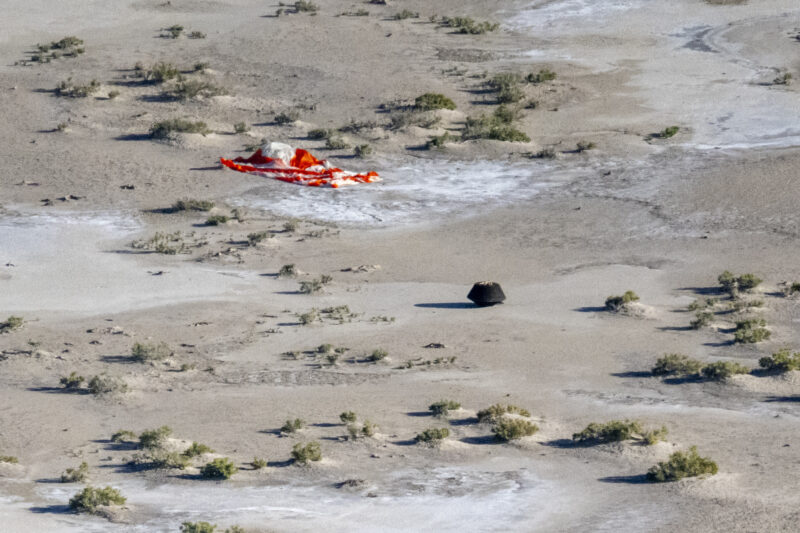
OSIRIS-REx’s cache of rock fragments arrived on Earth three years later. The spacecraft released a blunt entry capsule, which plowed into Earth’s atmosphere at Mach 35. Atmospheric friction rapidly decelerated it to a subsonic velocity within two minutes. There was a brief moment of concern when the capsule’s small drogue parachute, intended to stabilize the vehicle, could not be resolved by aerial and ground-based cameras monitoring the event. However, the drogue likely did deploy, as it is required to pull out the main parachute. This second canopy lowered the capsule gently to the ground at 11 miles per hour.
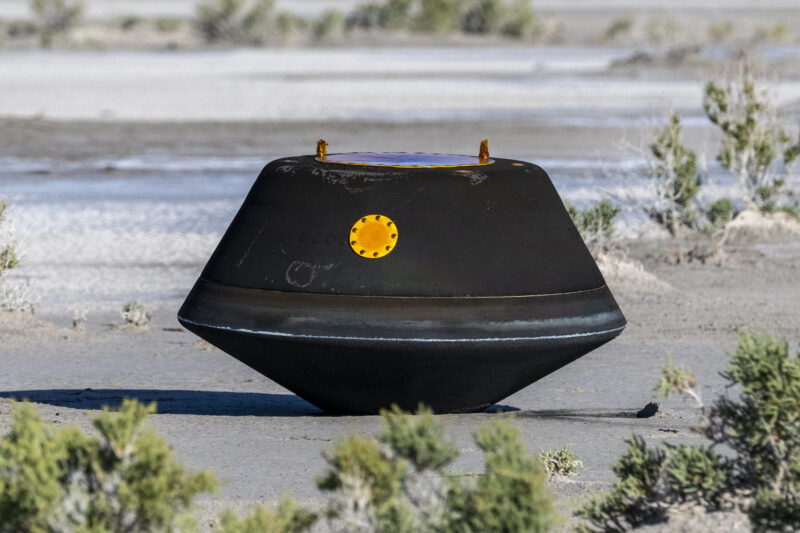
Planetary scientists are eagerly anticipating the opportunity to study OSIRIS-REx’s treasure. Among other objectives, the Bennu samples will allow us to refine the age of the Solar System and determine how to deflect hazardous asteroids (there is a 0.057% probability that Bennu will collide with the Earth in 2182). The Apollo lunar landings demonstrated that sample return missions are more productive than one-way missions to other worlds [1]. Physical rock and regolith samples can be studied using dozens of sophisticated laboratory instruments, which would never fit inside an interplanetary spacecraft or survive in the hostile environment of space. In addition, they can be studied by multiple generations of scientists. If Apollo provides any precedent, young researchers may be learning from OSIRIS-REx’s samples 50 years from now.
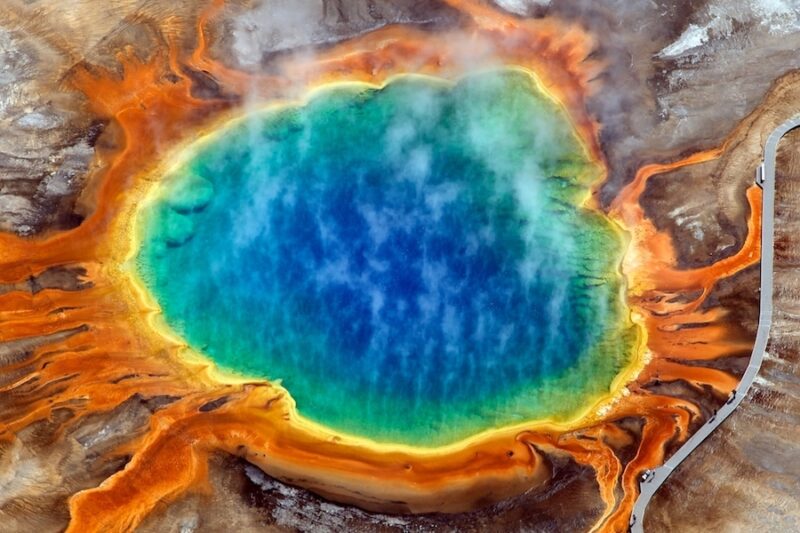
However, OSIRIS-REx’s most impactful discoveries might concern origins of life research. Astrobiologists are making major strides in understanding how life can emerge on Earth and on other planets. There are currently two leading hypotheses which attempt to explain this process. One states that microbial life emerged in the chimneys of hydrothermal vents on the sea floor; the other claims that it began in hot springs on land, which are similar to the famous geysers in Yellowstone National Park. Both theories have unique advantages. The hot spring hypothesis was developed by Bruce Damer and Dave Deamer at the University of California-Santa Cruz [2]. Damer and Deamer demonstrated that lipid molecules, the primary constituents of cellular membranes, naturally arrange themselves into thousands of spherical protocells in heated freshwater. In addition, the fluctuating water levels in hot springs drive rapid cycles of wetting and drying, which provide the energy required to build long polymers which are necessary for life.
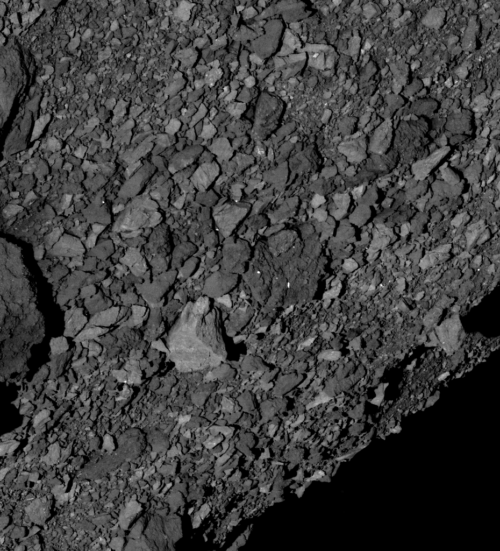
However, the hot spring hypothesis has one potential issue. Laboratory studies suggest that submarine hydrothermal vents may be natural factories for simple organic molecules, such as amino acids (although this has not been demonstrated in a natural vent system) [3]. Amino acids are prerequisites for life, but they are not produced in hot springs themselves. For an origin of life in a hot spring to be feasible, they need to be delivered by an external source and then concentrated to a sufficient degree to enable rapid prebiotic chemical reactions. Damer and Deamer hypothesize that carbon-rich asteroids provided a steady influx of organic molecules. These simple compounds would have accumulated on early volcanic islands, where they could then have been assembled into complex polymers inside hot springs.
The OSIRIS-REx samples will allow researchers to test this theory. Bennu is classified as a primitive B-type asteroid in the C-group. These planetesimals are rich in carbon, and unlike other asteroids, they have been minimally heated or modified since the formation of the Solar System. If any group of impactors was the source of Earth’s primordial amino acids, it was asteroids like Bennu. OSIRIS-REX delivered the largest and most pristine sample of asteroid material collected to date. When they analyze these particles, chemists will be able to create an inventory of the full set of organic molecules inside C-group asteroids and compare them to the molecules which are essential to Earth’s biosphere. According to NASA Administrator Bill Nelson, the OSIRIS-REX science team has already determined that the samples consists of 5% carbon by weight.
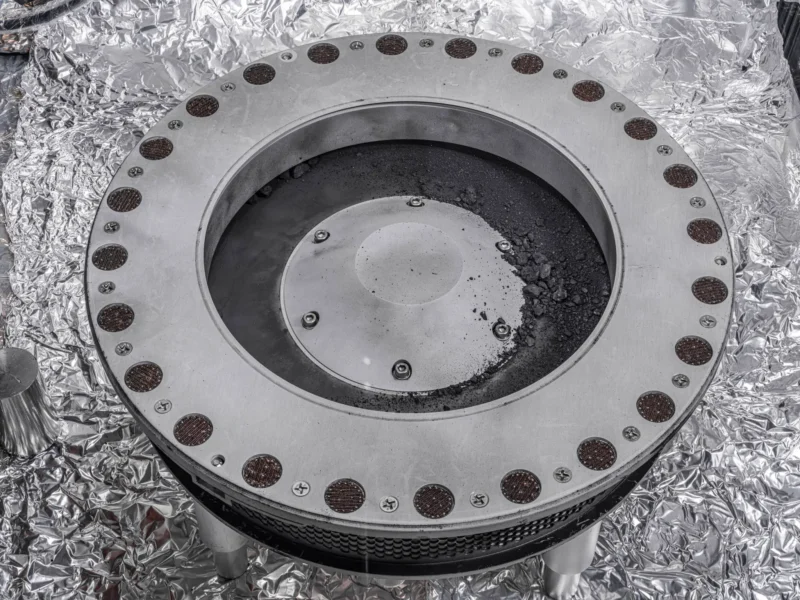
The sample also contains a significant amount of water, which is significant because carbon-rich asteroids might have also delivered this vital compound to Earth. For the first 200 million years of its history, Earth was covered in a global magma ocean, which would have vaporized any water on its surface. After the planet cooled, its water was likely delivered by impactors. For decades, comets from the Oort cloud were the primary culprits. However, the European Space Agency’s Rosetta orbiter measured the ratio of molecular hydrogen to its heavier isotope, deuterium, in a comet. Rosetta found that this ratio does not match the composition of Earth’s oceans, suggesting that comets were not the source of our planet’s water.
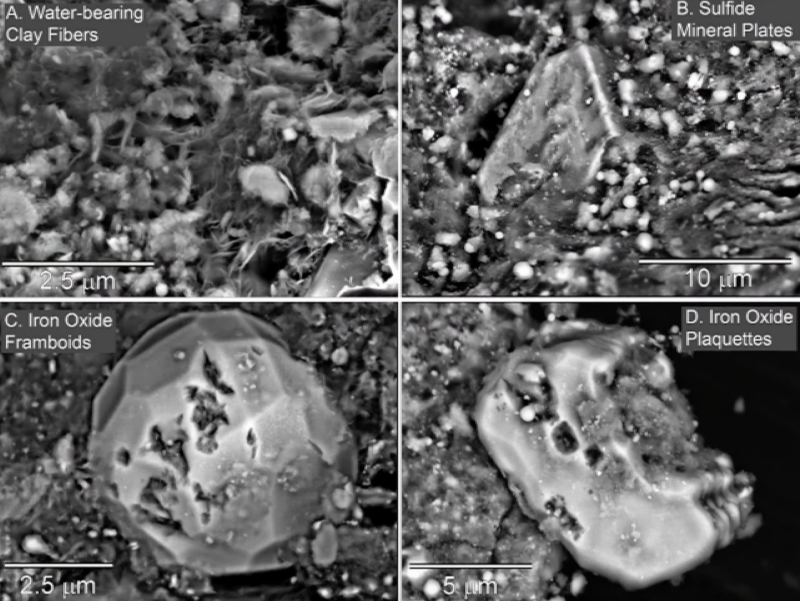
Existing samples provide tantalizing hints about the potential contents of the OSIRIS-REx sample return capsule. In 2006, NASA’s Stardust spacecraft collected particles from the tail of a comet. These small motes of dust contained the amino acid glycine. Carbon-rich meteorites, such as the famous 220-pound Murchison meteorite, contain a host of organic compounds. 15 different amino acids have been documented in these rocks. Most notably, the Murchison meteorite and its brethren contain the nucleobases adenine, thymine, guanine, and cytosine [4]. These molecules are responsible for the storage of genetic information in DNA. However, meteorites can be modified by the extreme temperatures of re-entry, and they can be contaminated by terrestrial life and organic material after they land on Earth’s surface. The OSIRIS-REx samples, in contrast, were carefully protected from contamination throughout their journey to Earth.
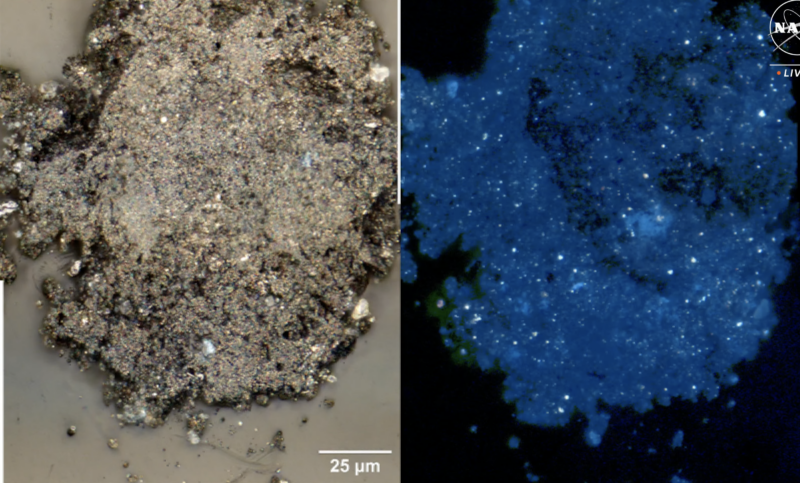
The sample return phase of the OSIRIS-REx mission is over, but its impact on science is just beginning. The mission’s journey to and from the asteroid Bennu was a feat of orbital mechanics and a testament to the skill of NASA’s spacecraft navigators. Thanks to their work, scientists will be able to analyze pristine samples from the dawn of the Solar System. For generations, humans have wondered how Earth’s remarkable biosphere – the only known example of life in the universe – came to be. OSIRIS-REx will not settle this question for certain. However, it will tell us about which ingredients might have been incorporated into our earliest microbial ancestors.




